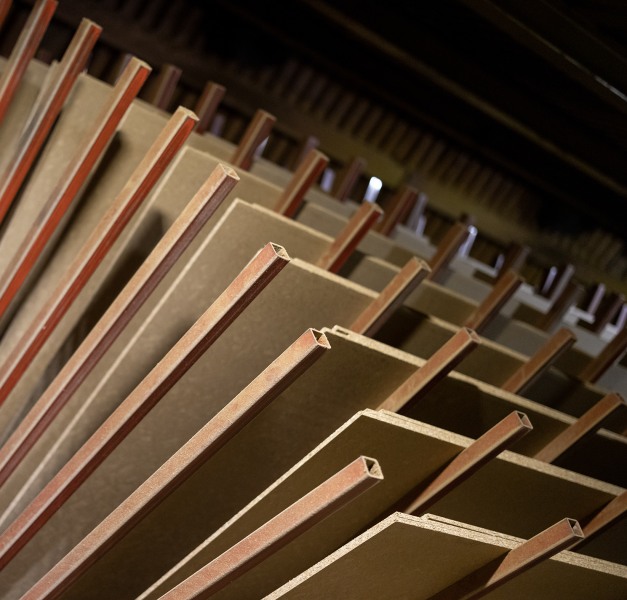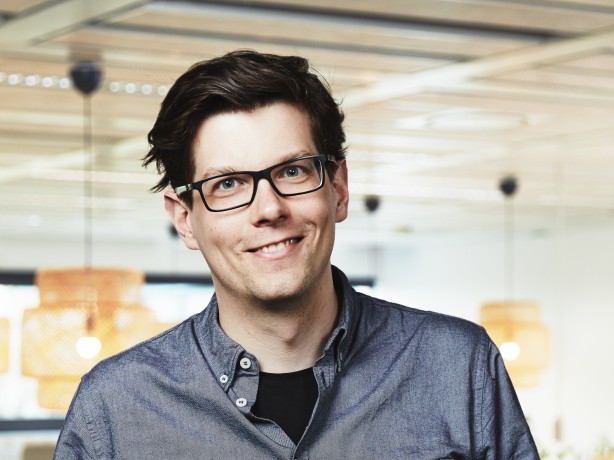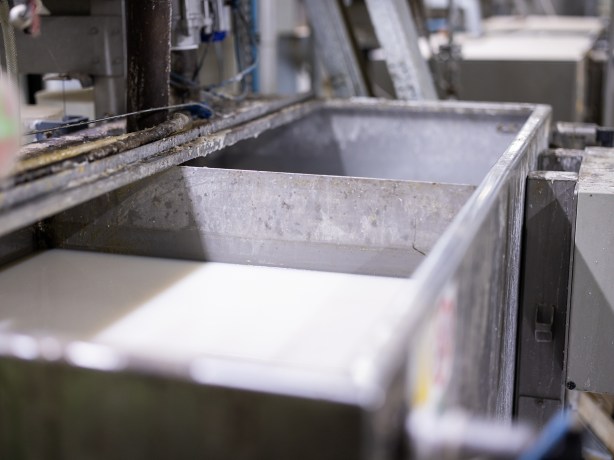
Finding new glue solutions is one of the main approaches to reducing the IKEA climate footprint, and most glue consumption is used in board production. As a result of innovation and several years of trials, IKEA is now switching to bio-based alternatives to reduce fossil-based glue usage by 40% and the climate footprint from glue by 30%.

“This is a big and important movement for IKEA, which we have been working to enable for more than 10 years. This confirms the need for more glues with much lower climate footprints and that small changes can have big impacts. We hope this will inspire others to follow”, says Venla Hemmilä, Material and Technology Engineer at IKEA of Sweden.
Switching from fossil-based to bio-based glue solutions will be a stepwise approach, and the goal is to have most board-producing factories in the IKEA supply chain using glues that have lower climate footprints by FY30. In Kazlu Ruda, Lithuania, the first IKEA Industry factory is now using a glue system made of technical starch from corn1 in large-scale production. This results from 10 years of efforts to find alternatives to fossil-based glues. In parallel, multiple trials with other glue systems are being conducted.

”As glue in board materials stands for 5% of the climate footprint of the IKEA value chain, this makes a big impact and a key step towards contributing to limiting global warming to 1.5°C. Together with increasing recycled wood use and striving towards 100% renewable energy in production, this is a milestone in our journey of making our wood-based products more sustainable”, says Andreas Rangel Ahrens, Head of Climate at Inter IKEA Group.
Finding new glue solutions is one of the main approaches to further reduce the climate footprint linked to particle board production, together with striving towards 100% renewable energy consumption. This movement aligns with the overall IKEA ambition to only use renewable and recyclable materials by FY30. To enable a transition to 100% bio-based glue use, IKEA has recently launched an accelerator programme to pilot new glue solutions with external partners.
1Technical starch is made from industrially grown plants that are separated from the food value chain.
Read more about the development of bio-based glue

About IKEA
IKEA offers well-designed, functional, and affordable, high-quality home furnishing, produced with care for people and the environment. There are several companies with different owners, working under the IKEA Brand, all sharing the same vision: to create a better everyday life for the many people. IKEA was founded in Sweden in 1943.
About the IKEA franchise system
The IKEA retail business is operated through a franchise system with franchisees that are authorised to market and sell the IKEA product range within specified geographical territories. Inter IKEA Systems B.V. is the owner of the IKEA Concept and worldwide IKEA franchisor, who also assigns different IKEA companies to develop the product range, supply products and deliver communication solutions. Today, 12 different groups of companies have the right to own and operate IKEA sales channels under franchise agreements with Inter IKEA Systems BV.
About Inter IKEA Group
Inter IKEA Group includes Inter IKEA Systems BV, IKEA of Sweden AB, IKEA Supply AG, and IKEA Industry AB related businesses. Inter IKEA Holding BV is the holding company for the Inter IKEA Group.
Source
IKEA, press release, 2023-03-01.
Supplier
Share
Renewable Carbon News – Daily Newsletter
Subscribe to our daily email newsletter – the world's leading newsletter on renewable materials and chemicals













